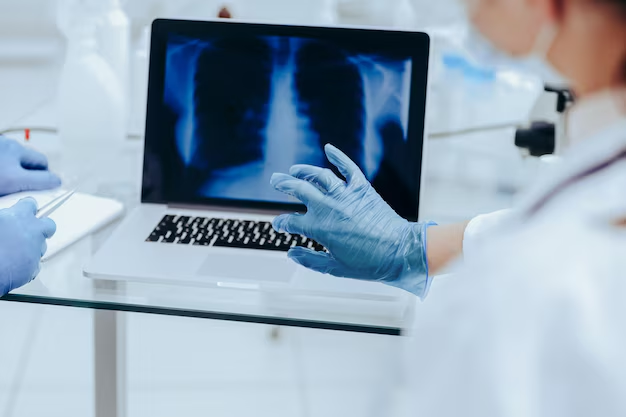Understanding How to Identify Osteoporosis: Wake-Up Call for Bone Health 🦴
Bone health is often an overlooked aspect of overall wellness, but as we age, it becomes increasingly important to pay attention to conditions like osteoporosis. If you’ve ever wondered how to check for osteoporosis, you’re already taking a crucial step towards safeguarding your quality of life. Osteoporosis is often called a "silent disease" because it can progress with little to no symptoms until a bone fracture occurs. This article will provide you with the essential information you need to identify potential warning signs and understand the process of checking for osteoporosis.
The Basics of Osteoporosis
What is Osteoporosis?
Osteoporosis is a bone disease characterized by low bone mass and deterioration of bone tissue, leading to increased fragility and risk of fractures. With healthy bones, you have a strong and dense structure. But osteoporosis causes bones to become porous and weak, increasing the likelihood of sudden and unexpected fractures. While anyone can develop osteoporosis, it's primarily observed in older adults, especially postmenopausal women.
Why Does Osteoporosis Occur?
- Hormonal Changes: A decrease in estrogen levels post-menopause is a significant contributing factor in women.
- Genetics: Family history of osteoporosis can increase your risk.
- Lifestyle Factors: Sedentary lifestyle, smoking, excessive alcohol intake, and poor nutrition can contribute.
Identifying Osteoporosis: Key Steps
Recognizing Early Symptoms
The early stages of osteoporosis rarely present noticeable symptoms. However, as the disease progresses, you may observe:
- Back Pain: Often caused by a fractured or collapsed vertebra.
- Loss of Height Over Time: Which can indicate spinal bone loss.
- Stooped Posture: Known as kyphosis, leading to a noticeable hunch.
- Frequent Bone Fractures: Especially in the wrists, hips, and spine.
Conducting a Self-Assessment
While self-assessment isn’t a replacement for medical evaluation, it can guide you to taking necessary action:
- Risk Factor Review: Consider your age, family history, and lifestyle habits.
- Dietary Considerations: Ensure adequate intake of calcium and vitamin D.
- Physical Activity: Regular weight-bearing and muscle-strengthening exercises.
Professional Evaluation: What to Expect
Bone Mineral Density (BMD) Test
The gold standard for evaluating bone health is a Bone Mineral Density test, also known as a DEXA scan (Dual-Energy X-ray Absorptiometry). Here’s a brief overview of what this test involves:
- Non-Invasive: A painless test similar to having an X-ray. You lie on a table while a machine passes over your body, measuring bone density.
- Comprehensive Assessment: Focuses on key areas susceptible to fracture, such as hips, spine, and wrist.
- Quick and Effective: Typically takes around 10-30 minutes depending on the scope.
Interpreting BMD Test Results
Results are usually given as a T-score:
- Normal Bone Density: T-score of -1.0 and above.
- Low Bone Mass (Osteopenia): T-score between -1.0 and -2.5.
- Osteoporosis: T-score of -2.5 and below.
Other Diagnostic Tools
Beyond BMD, doctors might use other diagnostic measures:
- Biochemical Markers: Blood or urine tests that can indicate bone loss rates.
- FRAX Score: A tool that calculates the 10-year probability of a fracture based on individual risk factors.
The Role of Nutrition and Lifestyle
Emphasizing Nutrient-Rich Diet
To maintain healthy bones, incorporate:
- Calcium: Essential for maintaining bone density. Found in dairy products, leafy greens, and fortified foods.
- Vitamin D: Helps the body absorb calcium. Sourced from sunlight exposure, fatty fish, and supplements.
- Protein and Magnesium: Important for bone structure and repair.
Adopting Healthy Habits
- Regular Exercise: Engage in activities like walking, jogging, or lifting weights.
- Avoid Smoking and Excessive Alcohol: Both can interfere with bone growth and accelerate bone loss.
When to Seek Medical Advice
It’s beneficial to consult your healthcare provider if you:
- Experience any signs of bone loss or fractures.
- Have several risk factors, including age, family history, or lifestyle risks.
- Want to discuss preventative strategies.
Empowering Yourself with Knowledge
While osteoporosis is a serious condition, it's manageable with the right approach. Understanding your risk, conducting self-assessments, and seeking timely medical evaluation are crucial steps. If you find yourself concerned about bone health, don’t hesitate to seek professional advice.
Embrace a proactive attitude – incorporate nutrient-rich foods, engage in regular exercise, and create a lifestyle conducive to strong bones. Remember, knowledge is a powerful ally, and staying informed is your first defense against the silent progression of osteoporosis.
Quick Recap 📝
- Symptoms to Watch: Back pain, loss of height, stooped posture, frequent fractures.
- BMD Test: A quick, non-invasive method to assess bone density.
- Diet Tips: Load up on calcium, vitamin D, protein, and magnesium.
- Lifestyle Changes: Exercise regularly, limit alcohol, and avoid smoking.
- Consult a Doctor: If symptoms arise or for personalized preventative advice.
By focusing on these actionable insights, you're well-equipped to approach bone health with confidence and determination. 💪

Related Articles
- a Nurse Is Caring For a Client Who Has Osteoporosis.
- a Percutaneous Is Performed To Treat Osteoporosis Related Compression Fractures
- Can Alcohol Cause Osteoporosis
- Can I Do Pilates If I Have Osteoporosis
- Can I Reverse Osteoporosis
- Can Men Get Osteoporosis
- Can Osteoporosis Affect Teeth
- Can Osteoporosis Be Cured
- Can Osteoporosis Be Painful
- Can Osteoporosis Be Reversed